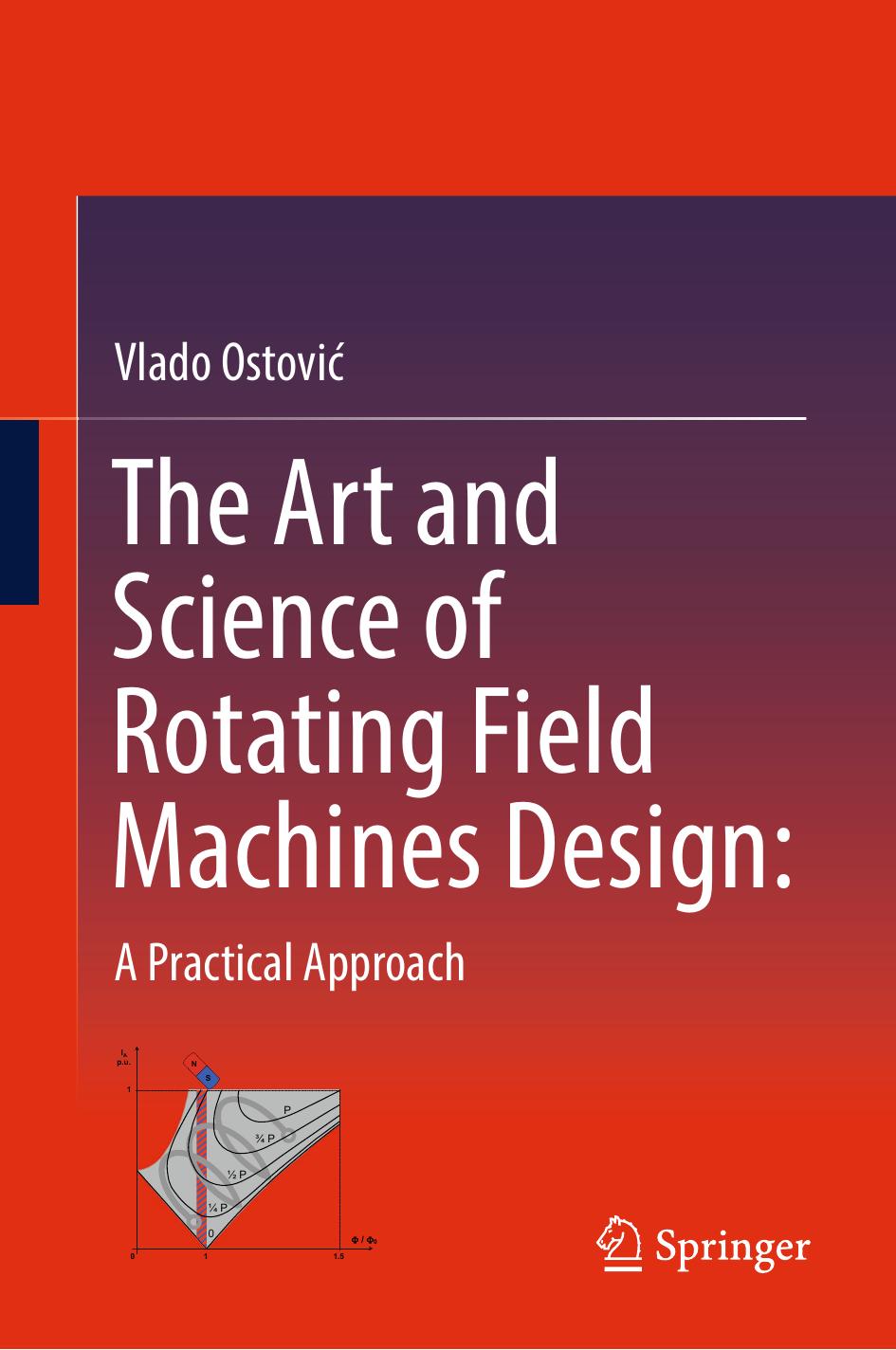The Art and Science of Rotating Field Machines Design: A Practical Approach by Vlado Ostović

Author:Vlado Ostović
Language: eng
Format: epub, pdf
Publisher: Springer International Publishing, Cham
When the machine is loaded, the stator ampere-turns superimpose to those created by the field current in Fig. 3.18. At the given operating point, the power factor is obviously strongly lagging, since the armature reaction managed to decrease significantly the no-load air gap flux density distribution.
Fig. 3.18Air gap flux density distribution in a claw pole synchronous machine at rated load [8]
3.5 A Straightforward Method for the Solution of Flux Distribution in Magnets
Assume a machine with surface-mounted magnets, the geometry of which is shown in Fig. 3.19. As shown in [3], the discretization of machineâs magnetic circuit is fine enough if a single tooth, or a yoke segment between two adjacent teeth, is taken as smallest elements, because of their high relative permeability and because their form coincides with flux tubes placed in the machine geometry. A magnet, on the other hand, generates flux components, the amounts of which are dependent not only on magnet parameters, but also on the geometry of the rest of the magnetic circuit [9]. Besides, the relative permeability of magnets does not differ substantially from 1, the relative permeability of air.
Fig. 3.19Electric machine with surface-mounted magnets
Download
The Art and Science of Rotating Field Machines Design: A Practical Approach by Vlado Ostović.pdf
This site does not store any files on its server. We only index and link to content provided by other sites. Please contact the content providers to delete copyright contents if any and email us, we'll remove relevant links or contents immediately.
| Automotive | Engineering |
| Transportation |
Whiskies Galore by Ian Buxton(41525)
Introduction to Aircraft Design (Cambridge Aerospace Series) by John P. Fielding(32885)
Small Unmanned Fixed-wing Aircraft Design by Andrew J. Keane Andras Sobester James P. Scanlan & András Sóbester & James P. Scanlan(32570)
Craft Beer for the Homebrewer by Michael Agnew(17930)
Turbulence by E. J. Noyes(7695)
The Complete Stick Figure Physics Tutorials by Allen Sarah(7135)
Kaplan MCAT General Chemistry Review by Kaplan(6591)
The Thirst by Nesbo Jo(6432)
Bad Blood by John Carreyrou(6271)
Modelling of Convective Heat and Mass Transfer in Rotating Flows by Igor V. Shevchuk(6219)
Learning SQL by Alan Beaulieu(6031)
Weapons of Math Destruction by Cathy O'Neil(5825)
Man-made Catastrophes and Risk Information Concealment by Dmitry Chernov & Didier Sornette(5644)
Digital Minimalism by Cal Newport;(5388)
Life 3.0: Being Human in the Age of Artificial Intelligence by Tegmark Max(5182)
iGen by Jean M. Twenge(5158)
Secrets of Antigravity Propulsion: Tesla, UFOs, and Classified Aerospace Technology by Ph.D. Paul A. Laviolette(4984)
Design of Trajectory Optimization Approach for Space Maneuver Vehicle Skip Entry Problems by Runqi Chai & Al Savvaris & Antonios Tsourdos & Senchun Chai(4837)
Electronic Devices & Circuits by Jacob Millman & Christos C. Halkias(4743)
